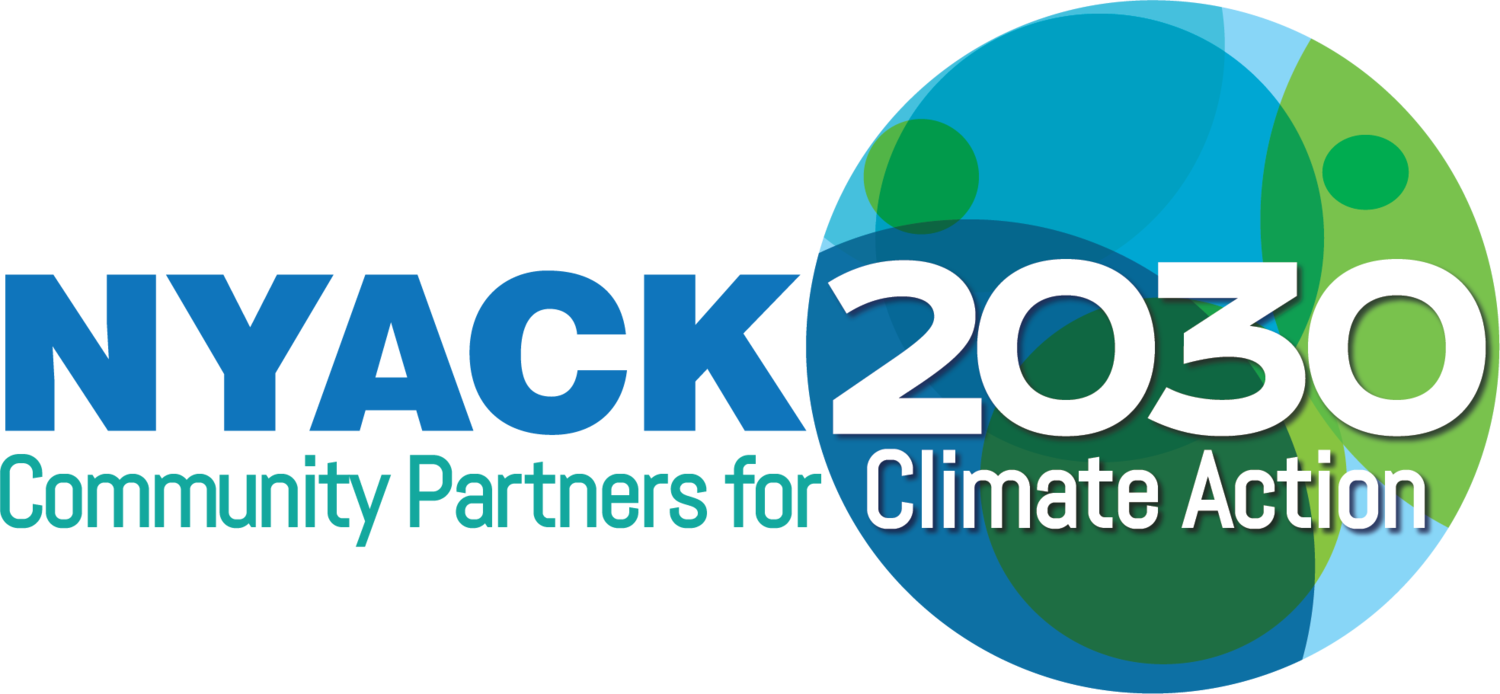
NATURAL RESOURCES
Ecosystems are in decline everywhere due to development, climate change, pollution and the abuse of land and water. We can help reverse species loss and and the degradation of resources by planning, planting and managing our streets, yards, public green spaces and built infrastructure to increase diversity and improve the resilience of natural systems.
Natural Resources Solution One
COMMUNITY TREE PLANTING
A healthy, well-maintained village forest provides many environmental benefits. Trees remove carbon dioxide from the atmosphere, provide vital shading and cooling and improve air quality, and reduce stormwater runoff. And planting and caring for trees is a popular and fun way for community members to work together. All three of the river Nyacks have tree committees that keep in touch and support each others efforts.
Nyack Tree Project
The Nyack Tree Project is a partnership among community volunteers, the Village of Nyack, the Nyack Tree Committee, and Nyack Park Conservancy to fund, plan, plant and maintain a robust and diverse village forest and spread awareness of the amazing benefits of healthy trees. Since 2016 over 150 trees have been planted and cared for through the project with the help and support of many individuals and Nyack Rotary Club, Nyack Public Schools, Rockland BOCES, and Rockland County Soil and Water Conservation District.
Funding for the project is provided by the Village of Nyack and donations through the Nyack Park Conservancy.
FB and Insta
Contact: nyacktreeproject@gmail.com
South Nyack’s Trees
South Nyack’s Tree and Parks Committee started a planting project in 2019 focusing on Franklin Street Park and will continue to make additions to it as part of the redesign of the park’s main entrance. This is a joint effort between the committee and Department of Public Works. They will also concentrate on planting trees on the northwest side of the village, on streets that have the greatest need, as budget allows.
The committee will continue to monitor the plantings along the NYS Thruway, running through South Nyack, as the landscape plan is implemented. Volunteers report on the health of plantings and identify replacement needs.
Contact:
Upper Nyack Trees
Insert info from Upper Nyack Committee
dfjfjadfkjaldsjkfjkljfkladjfkasfjl;
Contact
In many places along Nyack streets there is not enough room for trees along the sidewalk or under the power lines. The Village of Nyack’s Free Front Yard Tree Program offers free trees to qualifying residents with yards that have adequate space for healthy trees to grow near the sidewalk and street.
Learn more
Natural Resources Solution Two
ECOLOGICAL LANDSCAPE DESIGN and MANAGEMENT
Atmospheric warming means species are on the move and in some cases in decline. Invasive plant species have overwhelmed large areas of parks where native plants once thrived and degrade and diminish ecosystem richness and performance. Buildings and roads long ago altered the soils and natural water flow in our communities. And many common landscape management practices exacerbate these problems. We can do a lot locally through ecological landscape design and management, using natural systems as a model and creating habitats for a diverse array of native plants and wildlife.
Nyack Pollinator Pathway
Founded in 2019, Nyack Pollinator Pathway is a volunteer-led community project that aims to provide habitat for pollinators such as bees, butterflies, birds, and beneficial insects.
Our mission is to educate our neighbors about pollinator-friendly gardening practices, to promote the use of native wildflowers in pesticide-free landscapes, and to bring community volunteers together to convert underutilized green spaces in Nyack into lush oases for pollinators and other wildlife—and beautiful landscapes for humans too.
Invasive Species
fldjdaflkasfjldjfalkfkldskaslkfajsklfjsklfjklfjdaklfjdlksajfklsjd
Riverhook Farm Meadow
Love ‘Em and Leave “Em
Love 'Em and Leave 'Em is an approach to managing leaves and lawn clippings as valuable natural resources on site using a full range of techniques and a complete set of open source guidance, developed by our neighbors in Westchester, to help communities make the most of this low hanging fruit.
Mulching In place: Whether you "Do-It-Yourself" or hire a landscaper, LELE provides a number of benefits for your property. Leaf mulch breaks down it naturally fertilizes the soil, improves soil structure and soil biology. It also helps improve drainage and water retention. This free mulch protects and enhances your landscape beds. You can rake leave into piles and mulch mow, then spread the fine leaf mulch where you need it. Grass-cycling provides similar benefits for lawn fertilization and soil health.
There are also neighborhood- and community-wide environmental and cost benefits of LELE. Fewer vehicle trips to pick up and dispose of fall leaves means less pollution and more money saved. It’s generally quieter, since it reduces leaf blower use. It helps protect water quality in the rivers by keeping decomposing leaves out of storm sewers.
Find detailed tookits, videos and more on the at LELENY.org
Natural Resources Solution Three
WATER RESOURCE MANAGEMENT
Overview—Key issues locally are improving Hudson River water quality by reducing impacts from sewage discharges and stormwater. Solutions—green infrastructure for stormwater management and addressing illegal hookups. Water conservation is part of the big picture of managing the limited water resource in Rockland. What about ensuring quality of our drinking water?
Green Infrastructure for Stormwater Management
More Resources
Riverkeeper
Rockland County Water Task Force Conservation Plan
Our Potable Water—Quality and Supply










